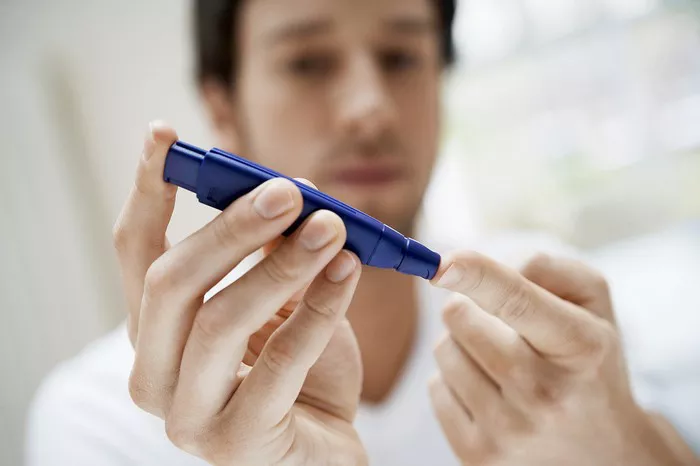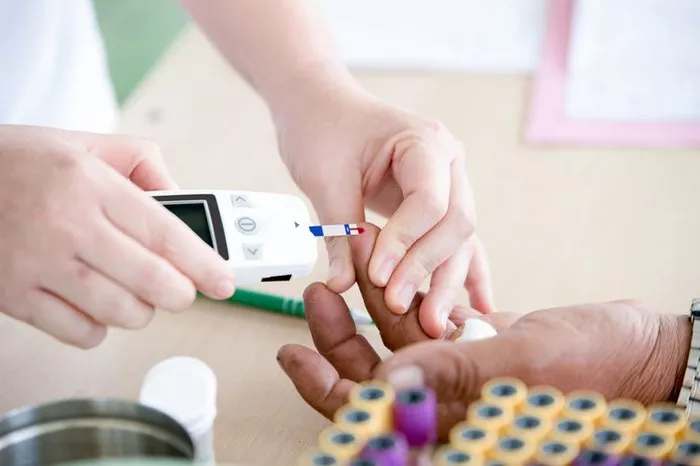Diabetes is a chronic condition characterized by elevated blood glucose levels due to the body’s inability to produce or effectively use insulin. Insulin therapy is a cornerstone in the management of diabetes, particularly when blood glucose levels cannot be controlled through diet, exercise, and oral medications alone. This article delves into the various stages and types of diabetes, the criteria for initiating insulin therapy, and the benefits and considerations involved in insulin use.
Types of Diabetes and Their Management
Type 1 Diabetes
Type 1 diabetes is an autoimmune condition where the body’s immune system attacks and destroys insulin-producing beta cells in the pancreas. This results in little to no insulin production, making insulin therapy essential from the time of diagnosis.
- Onset and Diagnosis: Type 1 diabetes often presents in childhood or adolescence but can occur at any age. Symptoms include rapid weight loss, excessive thirst, frequent urination, fatigue, and blurred vision.
- Insulin Requirement: Individuals with type 1 diabetes require lifelong insulin therapy to manage blood glucose levels. Multiple daily injections or continuous subcutaneous insulin infusion (CSII) via an insulin pump are common treatment methods.
Type 2 Diabetes
Type 2 diabetes is characterized by insulin resistance and a gradual decline in insulin production. It is more common in adults but is increasingly diagnosed in younger populations due to rising obesity rates.
- Onset and Diagnosis: Type 2 diabetes develops over time and may go undiagnosed for years. Symptoms can include increased thirst, frequent urination, fatigue, and slow-healing wounds.
- Initial Management: Lifestyle modifications (diet, exercise, weight loss) and oral medications (metformin, sulfonylureas, SGLT2 inhibitors, etc.) are the first lines of treatment.
- Insulin Requirement: Insulin therapy may become necessary when oral medications and lifestyle changes are insufficient to control blood glucose levels. This can occur due to progressive beta-cell dysfunction or in situations of severe hyperglycemia.
Gestational Diabetes
Gestational diabetes occurs during pregnancy and is characterized by elevated blood glucose levels that were not present before pregnancy. It increases the risk of complications for both the mother and the baby.
- Onset and Diagnosis: Gestational diabetes is typically diagnosed between the 24th and 28th weeks of pregnancy through glucose tolerance testing.
- Management: Initial management includes dietary changes and physical activity. Insulin therapy may be required if blood glucose levels remain high despite these measures.
Latent Autoimmune Diabetes in Adults (LADA)
LADA is a form of autoimmune diabetes that occurs in adulthood and shares characteristics with both type 1 and type 2 diabetes. It is often misdiagnosed as type 2 diabetes due to its slow progression.
- Onset and Diagnosis: LADA presents with gradual onset of symptoms similar to type 2 diabetes but with autoantibodies typically seen in type 1 diabetes.
- Insulin Requirement: Insulin therapy is usually needed as beta-cell function declines over time.
Criteria for Initiating Insulin Therapy
The decision to start insulin therapy is based on several factors, including the type of diabetes, blood glucose levels, and the effectiveness of other treatments. Key criteria include:
Persistent Hyperglycemia
- A1C Levels: Hemoglobin A1C reflects average blood glucose levels over the past 2-3 months. An A1C level above 7.0% often indicates the need for insulin in type 2 diabetes when oral medications and lifestyle changes are not sufficient.
- Fasting Blood Glucose: Consistently high fasting blood glucose levels (above 130 mg/dL) despite oral medications may necessitate insulin therapy.
- Postprandial Blood Glucose: Elevated post-meal blood glucose levels (above 180 mg/dL) that are not controlled with other medications can also be an indicator for insulin initiation.
Acute Hyperglycemia
- Severe Hyperglycemia: Blood glucose levels exceeding 300 mg/dL often require immediate insulin therapy to prevent complications such as diabetic ketoacidosis (DKA) in type 1 diabetes or hyperosmolar hyperglycemic state (HHS) in type 2 diabetes.
- DKA and HHS: Both conditions are medical emergencies. DKA is characterized by high blood glucose, ketones in the urine, and acidosis, while HHS involves extremely high blood glucose levels without significant ketones. Both require intensive insulin therapy and medical management.
Progressive Beta-Cell Failure
- Beta-Cell Function Decline: Over time, the pancreas may produce less insulin in type 2 diabetes, necessitating the addition of insulin to the treatment regimen. This can be monitored through C-peptide testing, which measures insulin production.
- Combination Therapy: When multiple oral or injectable non-insulin medications fail to achieve target blood glucose levels, insulin may be added to the treatment plan.
Special Situations
- Surgery and Hospitalization: During periods of stress, illness, or surgery, insulin may be temporarily required to control blood glucose levels, even in individuals with type 2 diabetes who are normally managed without insulin.
- Pregnancy: Women with preexisting diabetes or gestational diabetes may need insulin to maintain tight glucose control and prevent complications for both mother and baby.
Types of Insulin and Their Uses
Insulin is available in various forms, each with different onset, peak, and duration of action. The choice of insulin type depends on individual needs, lifestyle, and treatment goals.
Rapid-Acting Insulin
- Examples: Lispro (Humalog), Aspart (NovoLog), Glulisine (Apidra)
- Onset: 10-30 minutes
- Peak: 30-90 minutes
- Duration: 3-5 hours
- Use: Taken before meals to control postprandial blood glucose spikes.
Short-Acting Insulin
- Examples: Regular insulin (Humulin R, Novolin R)
- Onset: 30-60 minutes
- Peak: 2-4 hours
- Duration: 5-8 hours
- Use: Also used to manage blood glucose levels around meals, but requires timing adjustments compared to rapid-acting insulin.
Intermediate-Acting Insulin
- Examples: NPH (Humulin N, Novolin N)
- Onset: 1-2 hours
- Peak: 4-12 hours
- Duration: 12-18 hours
- Use: Provides basal insulin coverage, typically taken twice daily.
Long-Acting Insulin
- Examples: Glargine (Lantus, Basaglar, Toujeo), Detemir (Levemir)
- Onset: 1-2 hours
- Peak: Minimal peak
- Duration: Up to 24 hours
- Use: Provides consistent basal insulin coverage, usually taken once daily.
Ultra-Long-Acting Insulin
- Examples: Degludec (Tresiba)
- Onset: 30-90 minutes
- Peak: No significant peak
- Duration: Over 24 hours
- Use: Provides stable basal insulin levels with flexible dosing.
Benefits and Considerations of Insulin Therapy
Benefits
- Effective Blood Glucose Control: Insulin is highly effective in lowering blood glucose levels and achieving target A1C levels.
- Flexible Dosing: Various types of insulin allow for tailored treatment plans to match individual needs and lifestyles.
- Prevention of Complications: Proper insulin management helps prevent long-term complications of diabetes, such as cardiovascular disease, neuropathy, nephropathy, and retinopathy.
Considerations
- Hypoglycemia Risk: Insulin therapy carries a risk of hypoglycemia, especially if not matched to food intake and activity levels.
- Weight Gain: Some individuals may experience weight gain with insulin therapy due to improved glucose utilization and storage.
- Injection Requirements: Insulin must be administered via injection or insulin pump, which may be a barrier for some individuals.
- Monitoring: Frequent blood glucose monitoring is necessary to adjust insulin doses and ensure effective management.
See also: What’s Acute Hyperglycemia
Conclusion
The initiation of insulin therapy in diabetes management is guided by various factors, including blood glucose levels, the effectiveness of other treatments, and individual circumstances. While insulin is essential for all individuals with type 1 diabetes, it may also become necessary for those with type 2 diabetes, gestational diabetes, and other specific conditions. Understanding when and why insulin is required, the types of insulin available, and the benefits and considerations involved can help individuals and healthcare providers make informed decisions to achieve optimal diabetes control and improve overall health outcomes. By tailoring insulin therapy to meet individual needs and continuously monitoring blood glucose levels, people with diabetes can effectively manage their condition and reduce the risk of complications.
Related topics:
What’s the Different Types of Diabetes



























